(EPISODE #1 ABOUT PAKISTAN) TOP 10 MOST BEAUTIFUL LANDMARKS IN PAKISTAN YOU SHOULD VISIT THAT SPOTS IN 2018
2017 is ended now it's time to plan for the year 2018.
SHALIMAR GARDENS
Created in 1641, the Shalimar Gardens were the property of a noble, Pakistani family, a governance not hard to guess at all, judging the magnificence of this beautiful site. The gardens are laid out over three descending, progressive terraces carrying the poetic names of Bestower of Pleasure, Bestower of Goodness and Bestower of Life, each rising four to five meters above the other. Despite the ravishing flowers and rich fruit trees, the plants aren’t the best attraction of these gardens, as the misleading name might suggest. In fact, most attractive is the large pools placed in the middle of the gardens, which receive water from hundreds of fountains (410 in total across the three gardens). The quaint pavilions, porticoed visiters halls and marble basins found along the edges of the pools complete a peaceful, dream-like and refreshing corner in the city of Lahore.
Google Map: Shalimar Gardens, G. T. Rd, Lahore, Pakistan
FAISAL MASJID
When Turkish architect Vedat Dalokay‘s design was chosen for the Faisal Masjid, many raised their eyebrows. The design is differed from traditional mosque architecture, as it featured modern, smooth lines and, most prominently, lacked a dome. Building construction work started in 1976 and was finally closed in ten years. By then, most reviews had broken in front of the imposing, captivating building that now dominates Islamabad, Pakistan’s capital city, from its high position at the foot of the Margalla Hills. The Masjid is named after Faisal Bin Abdul-Aziz, the Saudi King who suggested the idea of a national Pakistani Masjid, and mostly funded for its construction. The 5,000-Square-Meter prayer hall is a Eight-Sided, concrete structure, inspired by the traditional tents of Bedouins, with a room for 100,000 worshippers. It’s surrounded by four **88-Meter-High minarets in absolute One-To-One proportion with the base. They were designed as the sides of an ideal cube, in honor of the sacred, cubic Kaaba found at the center of Mecca’s most famous Masjid.
Google Map: Faisal Mosque, Faisal Avenue, Islamabad, Pakistan
PAKISTAN MONUMENT
The Pakistan Monument was introduced in Islamabad on 23 March 2007 as a national monument representing the country’s history, and is in effect rich with significant cultural references. For its design, architect Arif Masood drew inspiration from the structure of a blossoming flower to represent the four provinces and three regions into which Pakistan is subdivided. The structure consists of four important ‘petals’ (the provinces), alternated with three lower ones (the regions), built in granite and decorated with representations on the inner sides. Seen from above, the monument meaningfully recalls the five-pointed star on Pakistan’s national flag. Below the petals, a metallic crescent is located, which is engraved with verses by Pakistan’s Founder Muhammad Ali Jinnah and Pakistani poet Allama Muhammad Iqbal.
Google Map: Shakar Parian National Park, Islamabad, Pakistan
TOMB OF MUHAMMAD ALI JUNNAH (Mazar-e-Quaid)
Internationally accepted as the Great Leader or Father of the Nation throughout Pakistan, Muhammad Ali Jinnah was a pivotal figure in leading the country to independence from the British Empire. A gorgeous mausoleum in Karachi, Pakistan’s largest city, and Jinnah’s hometown celebrates his memory and is home to his tomb, as well as those of his sister and Pakistan’s first prime minister. The mausoleum’s strong design impresses with its remarkable yet iconic simplicity: an almost cubic base, with an increase of 75 square meters, topped by a large dome, both clad with marvelous white marble. The sanctum can be entered on any of the four doors, one on every wall and each established under an eye-catching Moorish Arch. Jinnah’s tomb lies on an aerial platform rising in the middle of the beautiful surrounding park, with lovely moans and a set of 15 consecutive fountains that lead the eye towards the mausoleum.
Google Map: Mazar-e-Quaid, Jacob Lines, Karachi, Pakistan
MINAR -E-PAKISTAN
On 23 March 1940, the All-India Muslim League passed a resolution that represented the final step towards the foundation of Pakistan. Twenty years later, on the site in Lahore where that historical event had taken place, planning construction work started on a memorial monument, the Minar-e-Pakistan, which was ended in eight years. The Minar-e-Pakistan is a 62-Meter-High tower rich in symbols standing for the history of Pakistan. The tower is designed an elevated base, in the shape of a five-pointed star, which includes four platforms. The stones used to build each platform are progressively more clarified from the bottom up (ranging from uncut stones to polished white marble), to signify the difficult developments but the final success of the Pakistan Movement for independence. Like Islamabad’s Pakistan Monument, this landmark’s lower part is built in the shape of a Blossoming Flower, from which the tower stands as a symbol of the country’s birth. The Minar-E-Pakistan is located in a big park, very popular among Lahorites, which is visible along with pretty much the entire city from the minaret’s top dome.
Minar-e-Pakistan, Circular Rd, Lahore, Pakistan
WAZIR KHAN MASJID
The Walled City of Lahore or Old Lahore is a historical and chaotic region of the Pakistani city which used to be protected by walls, and began through 13 gates. Today, the walls are gone but most of the gates have survived. The Wazir Khan Masjid in Old Lahore can be reached by passing through the Delhi Gate. The great masjid, with four pillars of about 33 Meters each and five turnip-shaped domes, is constructed completely with small bricks and was named after the governor who ordered its construction in 1634. One of the most beautiful and well-structured masjid in Pakistan, it is best known for its unbelievable mosaics made from myriads of beautiful colored glazed tiles. These are spotted all over the external and internal walls and are so meticulous and rich in details that they make Wazir Khan a remarkable piece of art, an extension to a religious site. This masjid is also famous for having been the first to include a 22-shop bazaar in its original planning, still today a unique feature among masjid globally.
Wazir Khan Mosque, Brass Bazar, Walled City, Lahore, Pakistan
DERAWAR FORT
A visit to the Derawar Fort requires a three to four-hour-long tour with a four-wheel vehicle, but those with a soft spot for military buildings won’t regret the journey. Found in the middle of nowhere, miles into the Cholistan Desert, the awe-inspiring Derawar Fort, created in 1733, dominates the landscape and is characterized by unique coordinates of 40 massive, mostly entire bastions set all along the four walls. The ramparts rise above 30 Meters above the earth, and the fort has a spectacular margin of 1.5 kilometers. Visiting the fort’s interiors requires a proper approval by local authorities, and may not be worth the trouble of going through such process: the imposing bastions are in fact the real attraction of this remarkable landmark. While on site, however, visitors might also enjoy taking a look at the nearby masjid, an almost exact replica of the Moti Masjid right outside Delhi’s Red Fort.
Google Map: Derawar Fort, Derawar Fort Rd, Derawar Fort, Pakistan
HIRAN MINAR
When a beloved pet dies, what people usually do to keep its memory alive is preserve photos and maybe a few objects to remember it by. In 1606, when Mughal Emperor Jahangir’s pet deer died, he had a minaret constructed to remember it. The Hiran Minar (Deer Tower) is situated in the Pakistani city of Sheikhupura, which briefly enjoyed the status of a famous hunting ground in the early 1600s. One day, during a hunting session, Jahangir spotted a deer he wanted to kill but mistakingly hit his favorite hunting deer, Mansraji, instead. Feeling responsible and guilty, the Emperor ordered the building of the minaret. Almost Thirty Years later, the mausoleum was decorated with an adjacent, large water tank; in the middle of the tank lies a pictorial octagonal pavilion, connected to the mainland through an elevated walkway. A rare celebration of the love of man for animals, the Hiran Minar is a beautiful sight that certainly deserves to be seen.
Google Map: Hiran Minar, Sheikhupura, Pakistan
LAHORE FORT
The origins of the Lahore Fort, a stronghold in Old Lahore, are so old that it’s difficult to establish correctly when the fort was first constructed. It is known, however, that in the second half of the 16th century, the real mud-brick building was demolished and reconstructed with burnt bricks. Since then, this fortified citadel has supported various other modifications and corrections at the hands of almost all the rulers who reigned over Lahore, British colonialists included. As a result, it summarizes Pakistan’s amazing inspirational heritage in the various artistic influences seen throughout its wide range of different buildings: Masjid, memorial, palaces, public halls, baths, watchtowers, and much more. A journey through Lahore Fort is, in fact, a journey through Pakistan’s past, and is for this reason recommended to anyone visiting the country.
Google Map: Lahore Fort, Fort Rd, Lahore, Pakistan
BADSHAHI MASJID
The majestic Badshahi Masjid in Lahore is one of the most beautiful and very attractive sacred sites for Muslims. Built in 1673, this masjid was the world’s biggest for over 300 years until the Faisal Masjid was completed in 1986. Its large courtyard, which extends over an area of 26,000 Square Meters, remains the largest in the world and can host up to 95,000 worshippers. The masjid’s external walls are clad with red sandstone panels, painstakingly sculpted with beautiful, curve themes and decorated with marble inlays. As per tradition, the masjid has four minarets and three domes, the central one larger than the other two. These are covered with white marble, which creates a striking contrast with the dominating red. Travelers welcomed into the masjid through a grand entrance gate will discover that inside the building isn’t any less breathtaking, with its cornucopia of curves, stucco tracery, and frescoes which never fail to astonish.
Google Map: Badshahi Mosque, Walled City, Lahore, Pakistan
Thank you so much for checking out my post!
Please don't forget UPVOTE and RESTEEM.
FOLLOW ME So that you'll not miss any upcoming post.
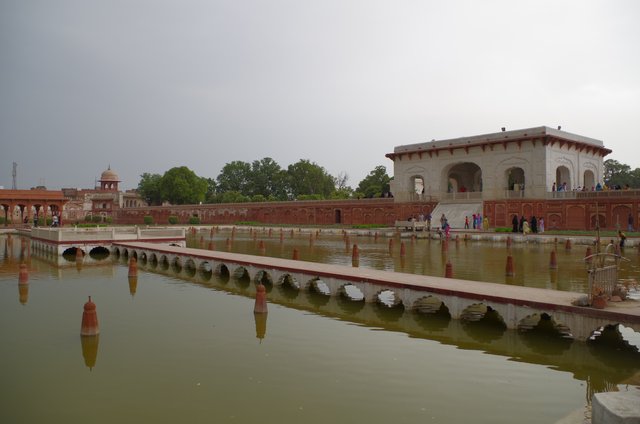
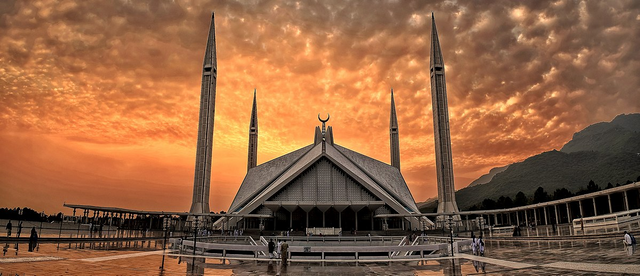
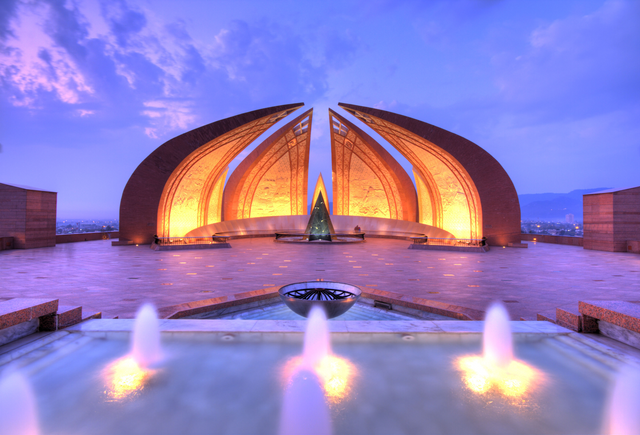
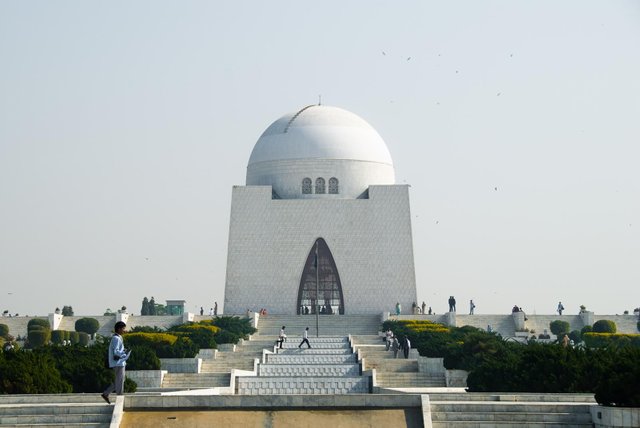
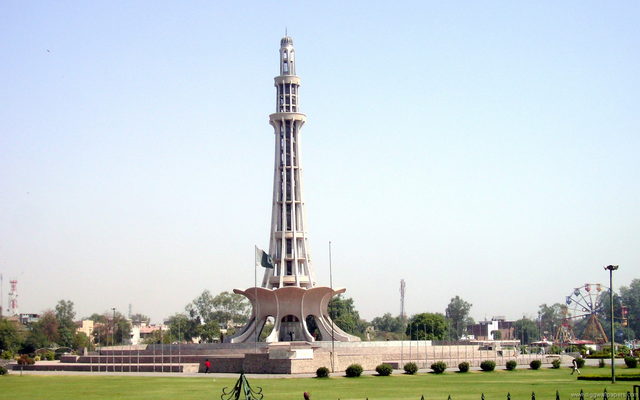
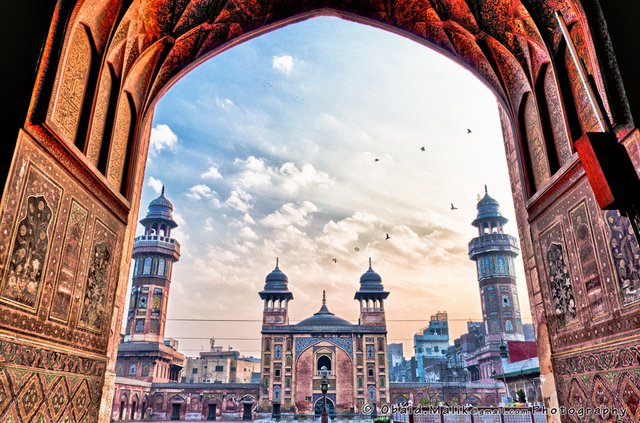
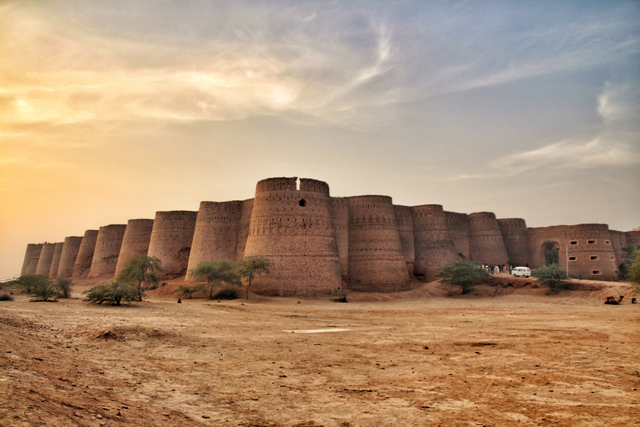
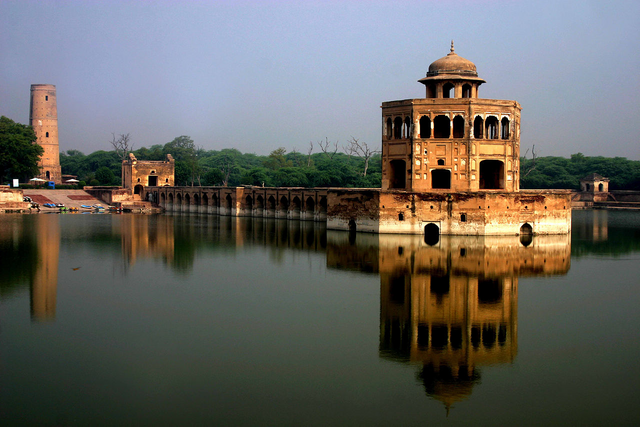
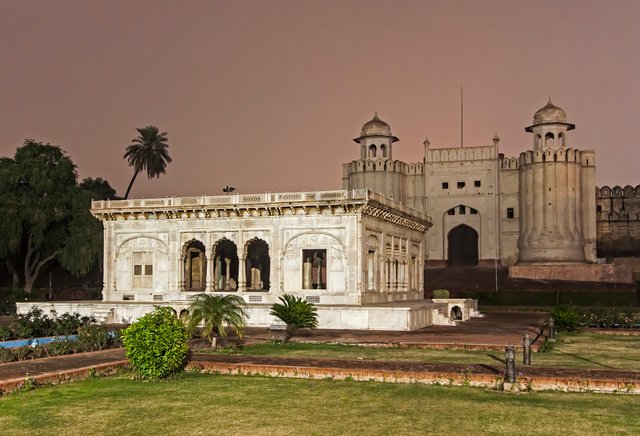
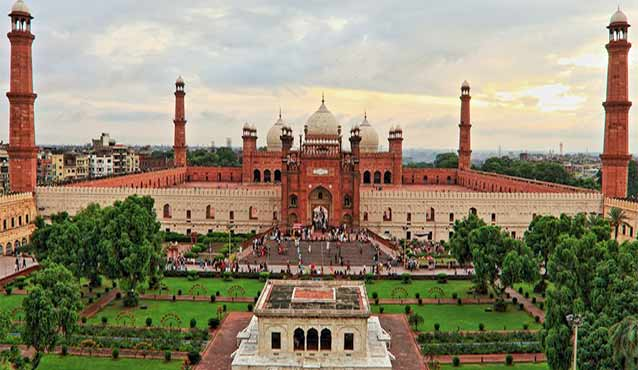
I will follow you. Love all the spots you wrote about. The Derawar fort and the Hiran Minar deserve to be seen for sure. Did you visit all these sights? I am planning a trip around the world and I am looking for all the the spots to visit. In case you are interested in travels, art and social innovation check my profile.
Hi, @rpontecorvo thank you so much for liking. Yes, of course, I have visit these all spots. Amazing historical places that are. That's great you should visit these spots and all share some more beautiful places of Pakistan. Follow me I hope you'll like it.